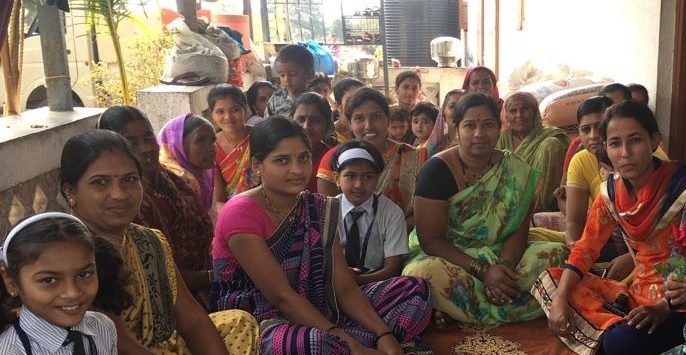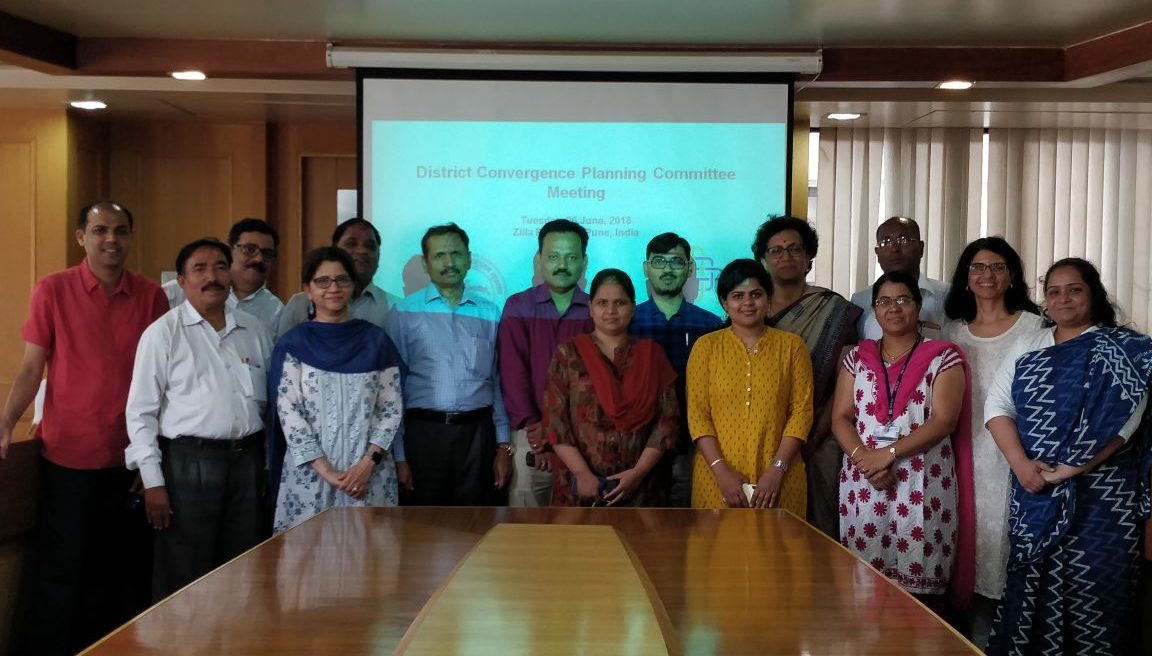SEEING THE BIG PICTURE:
SERVING GIRLS AND WOMEN THROUGH CONVERGENCE
Suraj Mandhare is an officer of the Indian Administrative Service and the CEO of the Zilla Parishad (District Council), Pune in Maharashtra State, India. Previously, he served as Joint Secretary in the Office of the Chief Secretary, Government of Maharashtra and as Deputy Municipal Commissioner in the Pune Municipal Corporation. He serves as the Chair of the Zilla Parishad (ZP) – 3D Program District Convergence Planning Committee (DCPC), which is tasked with planning and implementing convergent action across Pune rural District to ensure the multiple needs of girls and women are met in a coordinated way that increases impact.
“What do you see?” asked the facilitator, holding up a picture at a recent workshop.
The answers were varied:
“A woman.”
“A mother.”
“A working woman.”
“A tribal woman.”
“A woman in a forest.”
In fact, the picture showed all those things. No woman is just one thing. And as government officials, it is our job to address all the different dimensions of a woman to ensure that she and her family get what they need. If we do not, we risk undermining the success of our programs, and do not adequately serve girls and women.

Pune ranks second in size of area and size of population among the 35 districts of Maharashtra state. The district ranks high in terms of human development status in Maharashtra, second only to Mumbai, with a Human Development Index (HDI) of 0.814. With substantial infrastructure in education, industry and agriculture, Pune’s per capita income for 2011-12 was higher than the national average. Despite this, there is room for significant improvement in the status of women and girls in the district. Pune’s growing urbanization, economic prosperity, industrialization and increasing levels of literacy, have not yet led to girls and women enjoying equal status to boys and men on a range of important indicators, such as sex ratio, age of marriage, secondary school completion rates and nutritional status.

The Pune ZP or District Council is the key vehicle of implementation for national, state and district-level programs in Pune rural District to address these continued inequalities. We deliver a range of programs across sectors for girls and women including health, education and economic empowerment programs. In addition to robust programs, we have an innovation fund through which to add value to our programs and talented teams across ZP departments.
However, too often we are not seeing the big picture, busy with the day-to-day work of government. The result is that we work in silos, and see limited impact and limited satisfaction. To truly serve girls and women effectively, we need to coordinate multiple inputs and provide them simultaneously. By talking to each other within the ZP and sharing data, we will be able to jointly plan and implement programs more effectively. By working with partners in civil society and the corporate sector, who can provide technical and other inputs, we can fill gaps and benefit from new methodologies and additional resources.

For example, if we want to impact rates of child marriage, we could bring together the ZP education department to ensure we have high quality primary and secondary schools for girls to attend, along with the transportation department to ensure girls have safe transportation to get to school. These efforts could be complemented by NGO life skills programs that help girls challenge restrictive gender norms and corporate skilling programs that can help young women expand their economic options beyond marriage.
Convergence has long been seen by the Government of India as an effective and efficient way to use public resources. It is included in several national schemes, such as the National Rural Livelihoods Mission. However, implementation of such an approach is a challenge because we are so used to working in siloes.

The ZP – 3D Program District Convergence Planning Committee provides a unique opportunity to plan and focus on how to effectively implement convergence. The Committee includes representatives from key departments within district government, including health, education, women and child development (WCD) and rural development, and will draw on partnerships with civil society and the corporate sector. By coming together to jointly plan a more coordinated approach, our objective is to increase the impact of our programs and see improvements in key indicators related to the status of girls and women in rural Pune. It is our hope the DCPC can serve as a model for convergent action, providing lessons learned and tools for how we can achieve coordinated programs to reach girls and women more effectively.
Convergence provides a way to see the big picture. Now it is time to act on it.
Featured Illustration by Zoe Harveen Kaur
August 2018